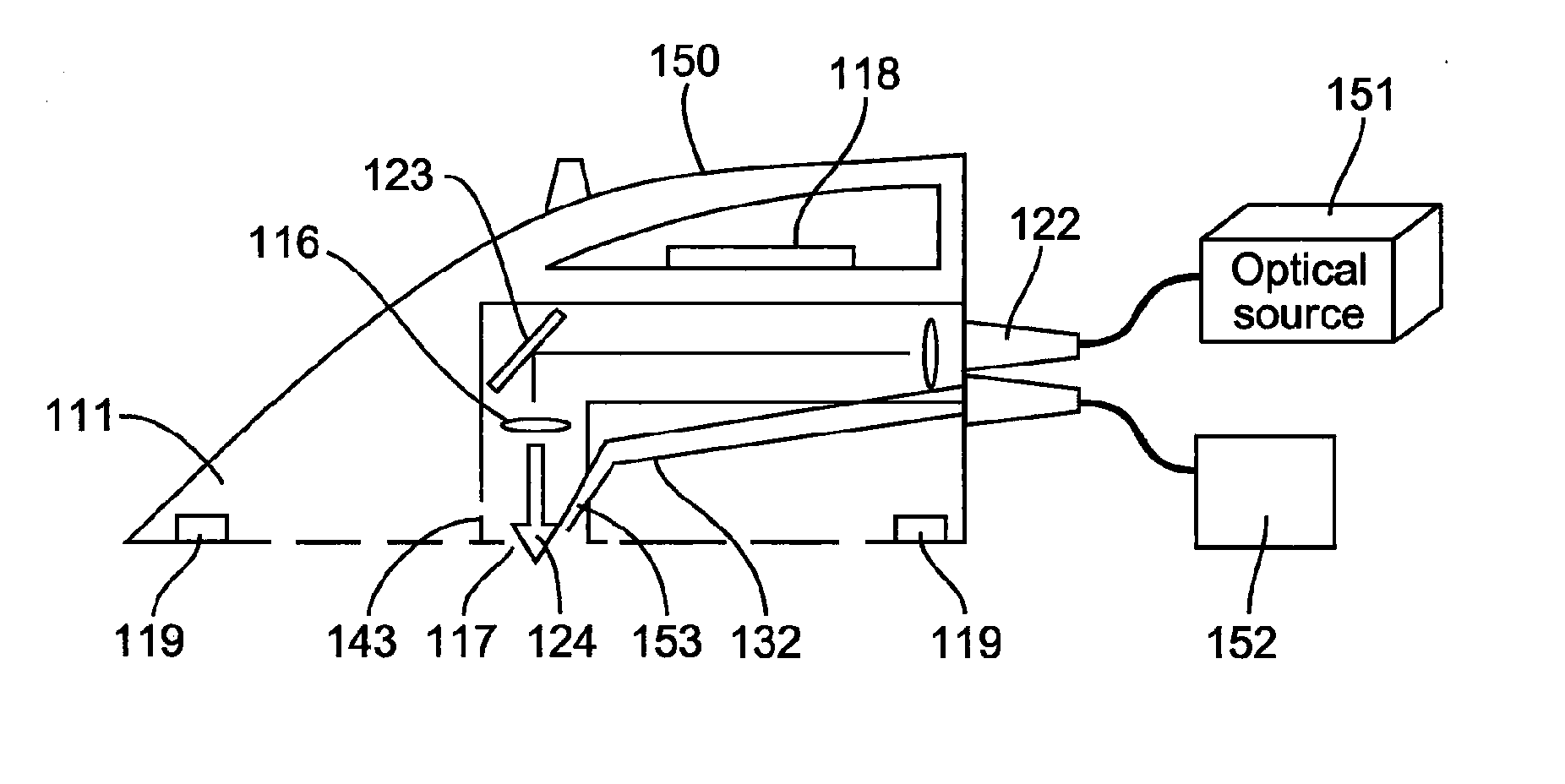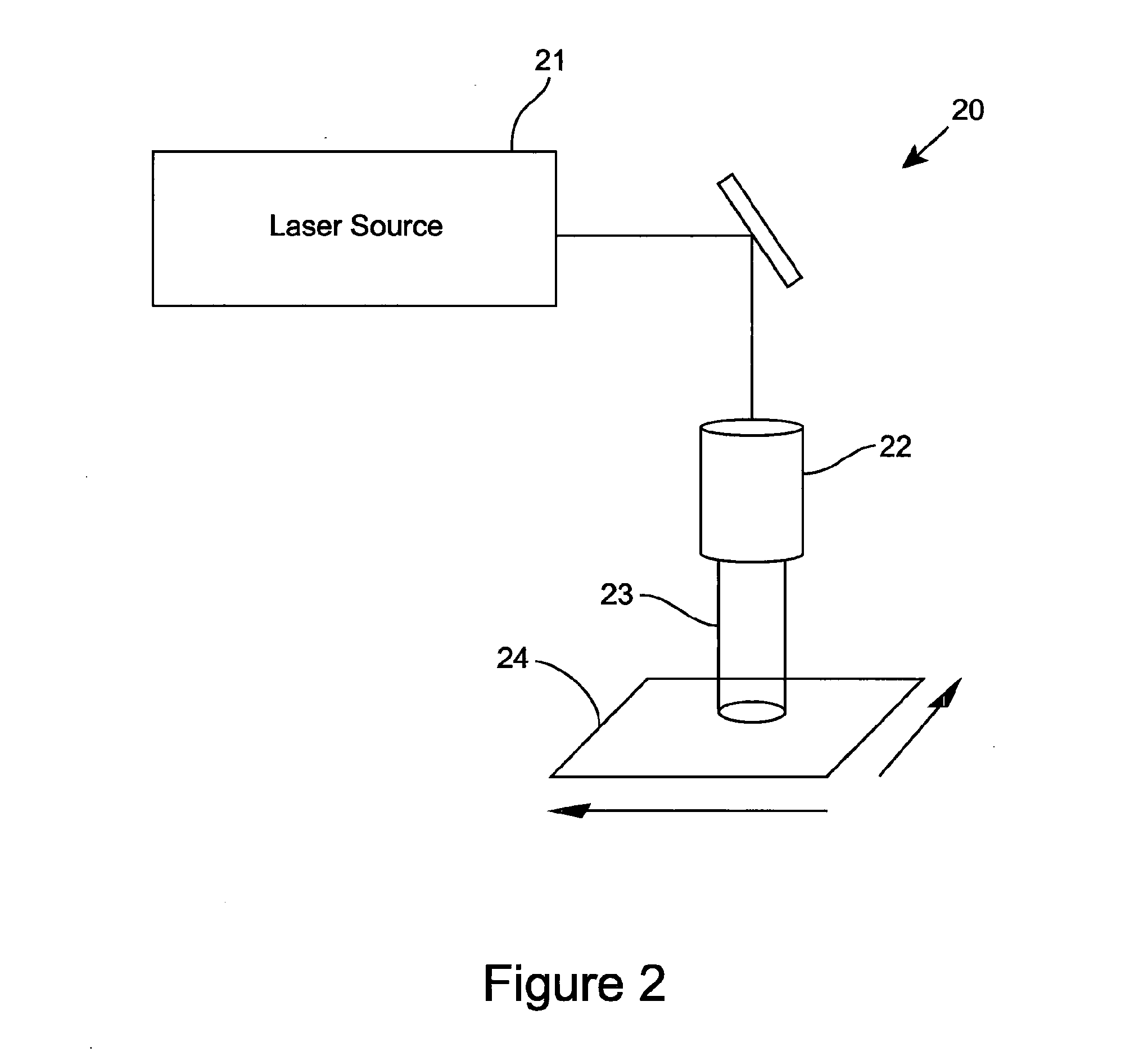Methods and Apparatus for Laser Cleaning of Fabric Materials
a technology of fabric materials and laser cleaning, applied in the direction of detergent compounding agents, physical treatment, therapy, etc., can solve the problems of requiring subsequent drying, high water and power consumption of machines, and affecting the cleaning effect of fabrics
- Summary
- Abstract
- Description
- Claims
- Application Information
AI Technical Summary
Benefits of technology
Problems solved by technology
Method used
Image
Examples
Embodiment Construction
[0063]FIG. 1 illustrates one embodiment of an apparatus 10 for laser cleaning of a substrate, such as, for example, a practical fabric material. The apparatus 10 comprises an optical transmission pathway arranged for propagating optical energy received from source of optical radiation for emanation of the optical energy for the cleaning of the substrate, and which in the embodiment of FIG. 1 can comprise a beam expander, focussing lens and scanning head. For example, the optical output beam 11 from the source of optical energy, which preferably comprises laser source 12, is beam shaped using a beam expander 13 and focussing lens 14 into a focussed beam 15 at the surface of a substrate 16. The beam can be scanned over the substrate surface using a laser beam scan head 17 and the substrate can be scanned with respect to the focussed beam using an x-y or x-y-z axes translation stage 18. Typically the laser, scan head and translation stage are controlled by a computer 19 to determine th...
PUM
| Property | Measurement | Unit |
|---|---|---|
| wavelength | aaaaa | aaaaa |
| wavelength | aaaaa | aaaaa |
| time duration | aaaaa | aaaaa |
Abstract
Description
Claims
Application Information
 Login to View More
Login to View More - R&D
- Intellectual Property
- Life Sciences
- Materials
- Tech Scout
- Unparalleled Data Quality
- Higher Quality Content
- 60% Fewer Hallucinations
Browse by: Latest US Patents, China's latest patents, Technical Efficacy Thesaurus, Application Domain, Technology Topic, Popular Technical Reports.
© 2025 PatSnap. All rights reserved.Legal|Privacy policy|Modern Slavery Act Transparency Statement|Sitemap|About US| Contact US: help@patsnap.com



